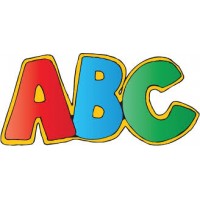Playground Terminology

Playgrounds should be a safe, fun, learning and developmental experience for children. Planning, design, purchase, installation and maintenance take some extra effort to make this happen. Learning the terminology of the "trade" will allow the adult part of this equation to be more successful. This terminology is used throughout most of the industry.
Barrier
An enclosing device around an elevated platform that is intended to prevent both inadvertent and deliberate attempts to pass through the device.
Composite Structure
Two or more play structures attached or functionally linked, to create one integral unit that provides more than one play activity.
Critical Height
The fall height below which a life-threat-ening head injury would not be expected to occur.
Designated Play Surface
Any elevated surface for standing, walking, crawling, sitting or climbing, or a flat surface greater than 2 inches wide by 2 inches long having an angle less than 30° from horizontal.
Embankment Slide
A slide that follows the contour of the ground and at no point is the bottom of the chute greaterthan 12 inches above the surrounding ground.
Entanglement
A condition in which the user’s clothes or something around the user’s neck becomes caught or entwined on a component of playground equipment.
Entrapment
Any condition that impedes withdrawal of a body or body part that has penetrated an opening.
Fall Height
The vertical distance between the highest designated play surface on a piece of equipment and the protective surfacing beneath it.
Footing
A means for anchoring playground equipment to the ground.
Full Bucket Seat Swing
A swing generally appropriate for children under 4 years of age that provides support on all sides and between the legs of the occupant and cannot be entered or
exited without adult assistance.
Geotextile (filter) Cloth
A fabric that retains its relative structure during handling, placement, and long-term service to enhance water movement, retard soil movement, and to add reinforcement and separation between the soil and the surfacing and/or sub-base.
Guardrail
An enclosing device around an elevated platform that is intended to prevent inadvertent falls from the elevated surface.
Infill
Material(s) used in a protective barrier or between decks to prevent a user from passing through the barrier(e.g., vertical bars, lattice, solid panel, etc.).
Loose-Fill Surfacing Material
A material used for protective surfacing in the use zone that consists of loose particles such as sand, gravel, engineered wood fibers, or shredded rubber.
Preschool-Age Children
Children 2 years of age through 5 years of age.
Projection
Anything that extends extends outward from a surface of the playground equipment and must be tested to determine whether it is a protrusion or entanglement hazard,or both.
Protective Barrier
See Barrier.
Protective Surfacing
Shock absorbing (i.e., impact attenuating) surfacing material in the use zone that conforms to the recommendations in section 2.4 of the Handbook for Public
Playground Safety.
Protrusion
A projection which, when tested, is found to be a hazard having the potential to cause bodily injury to a user who impacts it.
Roller Slide
A slide that has a chute consisting of a series of individual rollers over which the user travels.
School-Age Children
Children 5 years of age through 12 years of age.
Slide Chute
The inclined sliding surface of a slide.
Stationary Play Equipment
Any play structure that has a fixed base and does not move.
Supervisor
Any person tasked with watching children on a playground. Supervisors may be paid professionals (e.g.,childcare, elementary school or park and recreation personnel), paid seasonal workers (e.g., college or high school students), volunteers (e.g., PTA members), or unpaid caregivers(e.g., parents) of the children playing in the playground.
Toddlers
Children 6 months through 23 months of age.
Tube Slide
A slide in which the chute consists of a totally enclosed tube or tunnel.
Unitary Surfacing Material
A manufactured material used for protective surfacing in the use zone that may be rubber tiles, mats, or a combination of energy absorbing materials held in place by a binder that may be poured in place at the playground site and cures to form a unitary shock absorbing surface.
Upper Body Equipment
Equipment designed to support a child by the hands only (e.g., horizontal ladder, overhead swinging rings).
Use Zone
The surface under and around a piece of equipment onto which a child falling from or exiting from the equipment would be expected to land. These areas are also designated for unrestricted circulation around the equipment.
Source: 1.8 Definitions
Public Playground Safety Handbook - CPSC Publication 325
U.S. Consumer Product Safety Commission
